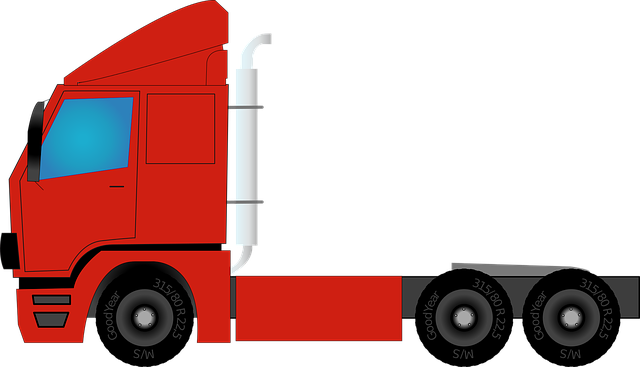Learn how to register your car in California with our step-by-step guide. Before you begin, understand the essential requirements for car registration in the Golden State, including needed documents for a Vehicle Identification Number (VIN) verification. We’ll walk you through conducting a VIN check, completing the official application, and submitting necessary paperwork along with the required fees.
- Understand the Requirements for Car Registration in California
- Gather Necessary Documents for VIN Verification
- Conducting a Vehicle Identification Number (VIN) Check
- Complete the California Vehicle Registration Application
- Submit and Pay for Your Car Registration
Understand the Requirements for Car Registration in California

Before you begin the registration process, it’s crucial to understand the requirements for car registration in California. The state demands several key documents and inspections to ensure vehicle safety and compliance with environmental standards. One critical aspect is the Vehicle Identification Number (VIN) verification, which establishes the vehicle’s authenticity and history. This process involves a thorough check of the VIN, often facilitated by mobile VIN inspection or vin inspection services, to confirm its accuracy and identify any potential issues.
Additionally, California requires proof of insurance, valid registration from the previous state, completed title transfer, and emission tests for most vehicles. The state also offers various options for registration, including online, in person at a DMV field office, or by mail. Opting for mobile VIN verification can streamline this process, ensuring that your vehicle’s registration is handled efficiently while adhering to California’s stringent regulations.
Gather Necessary Documents for VIN Verification

Before you begin the registration process, it’s crucial to gather all the essential documents for VIN verification in California. The Vehicle Identification Number (VIN) is a unique code that identifies your car, and its verification is a critical step in the registration procedure. Collect the following documents: your valid driver’s license or state-issued ID card, proof of residency (like a utility bill or bank statement), the title for your vehicle, and the current registration (if applicable). Additionally, you’ll need to have your car’s VIN readily available—this can usually be found on the vehicle’s certificate of origin, insurance policy, or on the driver’s side door jamb.
For convenience, many California residents opt for a mobile VIN verifier or inspection service, allowing them to complete this process from the comfort of their homes. These services send a professional to your location to perform the VIN inspection and verify all necessary details with the Department of Motor Vehicles (DMV). This option can save time and effort, especially for those who find the traditional methods cumbersome.
Conducting a Vehicle Identification Number (VIN) Check

Before registering your car in California, conducting a Vehicle Identification Number (VIN) check is a crucial step. This process involves verifying the VIN of your vehicle to ensure it matches the information provided by the manufacturer and to confirm its authenticity. A mobile vin verifier or even a simple vin inspection can help you complete this task efficiently. By cross-referencing the VIN with reputable databases, you can uncover valuable details about the car’s history, including any previous accidents, outstanding recalls, or potential fraud.
A mobile vin inspection is particularly convenient for California residents as it allows you to conduct the check at your convenience. This method streamlines the registration process by providing instant and accurate results. With a few simple steps, you can ensure that your car is safe to drive and comply with state regulations, making the registration experience smooth and stress-free.
Complete the California Vehicle Registration Application

To start the registration process, you’ll need to complete the California Vehicle Registration Application (Form DV-140). This form requires several key pieces of information, including your personal details and those related to your vehicle. One crucial aspect is ensuring accurate VIN verification. The Vehicle Identification Number (VIN) is a unique code that identifies your car, and it’s essential for registration. Using a mobile vin verifier or conducting a vin inspection yourself can help ensure the VIN is correct before submitting the form.
Make sure to double-check all details, including the vehicle make, model, year, and any previous owners. All this information is necessary for the California Department of Motor Vehicles (DMV) to process your registration and issue a new license plate if required. Keep in mind that some vehicles may have specific requirements or additional steps, so always refer to the DMV’s official guidelines when completing the application.
Submit and Pay for Your Car Registration

After completing your vehicle’s registration application, it’s time to submit and pay for your car registration. This process involves a few key steps to ensure everything is in order. First, double-check that all the required documents are included—a valid driver’s license or ID, proof of insurance, and payment for the registration fee. You can typically pay online through the California DMV website or at a nearby DMV office using cash, check, or credit/debit card.
An important part of this process is the VIN (Vehicle Identification Number) verification. This step ensures that your vehicle’s details are accurate and matches the records in their system. Some people opt for a mobile VIN inspection or verifier to simplify this process, as it allows them to verify the VIN digitally without visiting a DMV location. This added convenience can save time and effort, especially when dealing with modern, complex vehicles.
Registering a car in California is a straightforward process that requires understanding specific requirements and gathering essential documents. By completing the steps outlined in this article, including VIN verification, you can ensure your vehicle’s compliance with state regulations. Remember to keep accurate records of all documents for future reference and to maintain a smooth registration experience.
